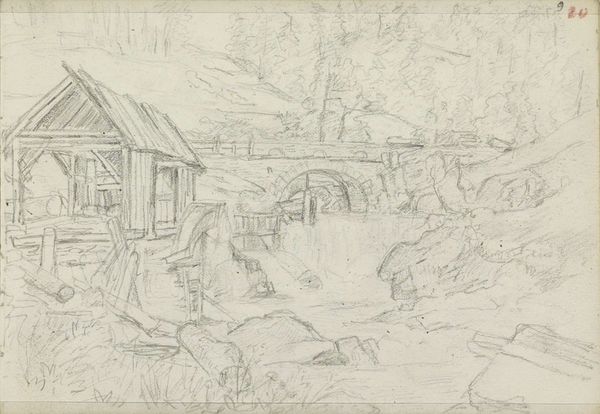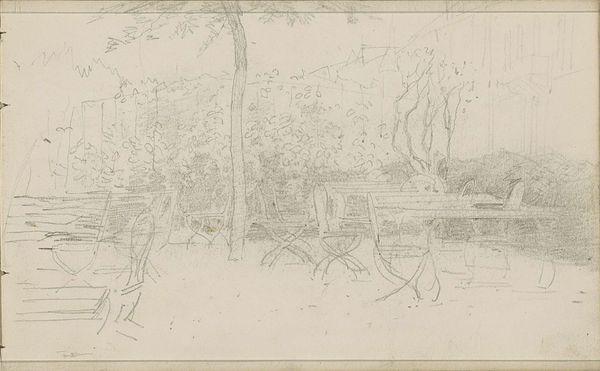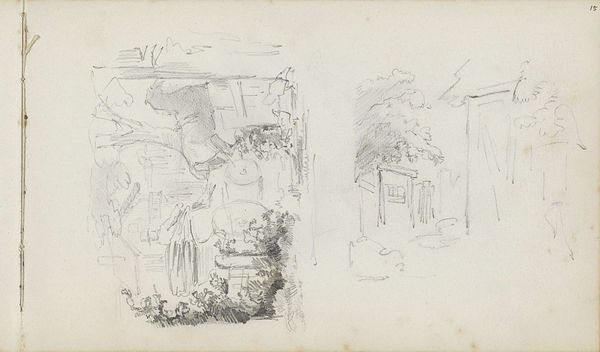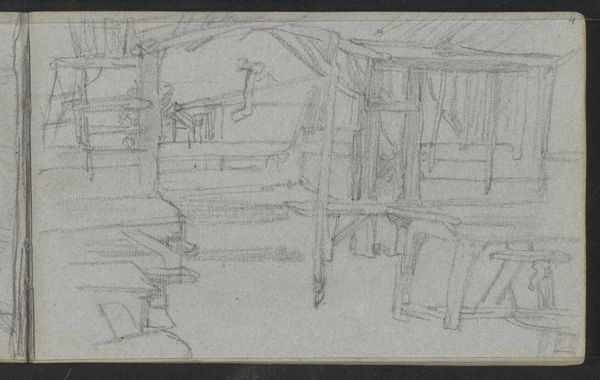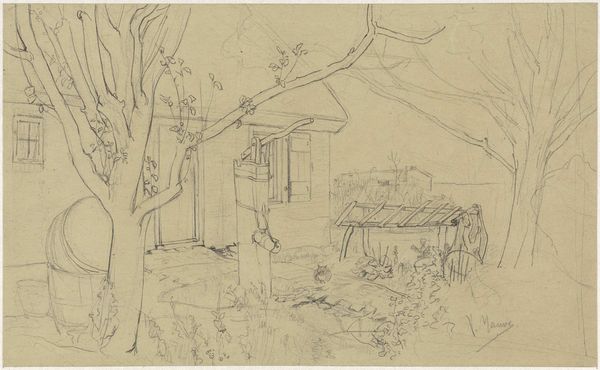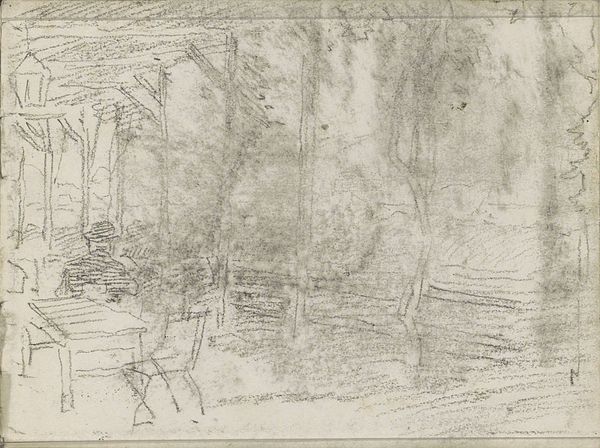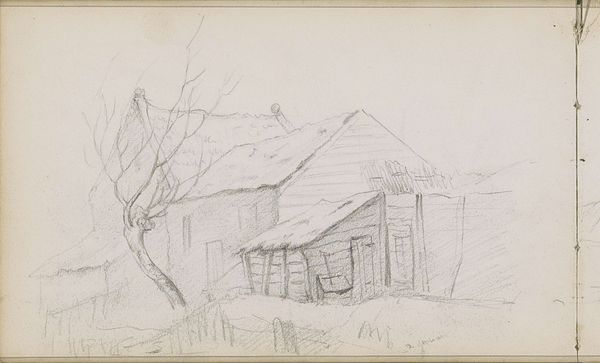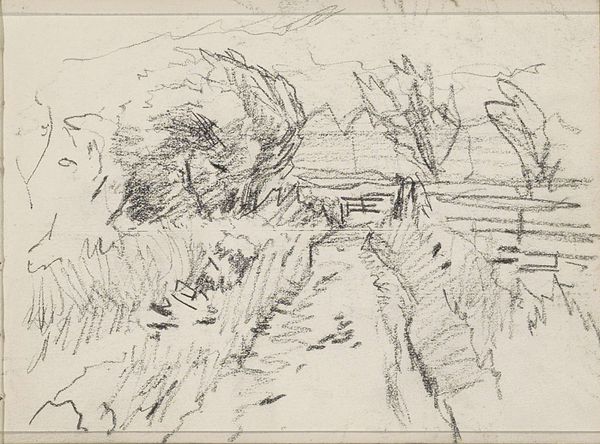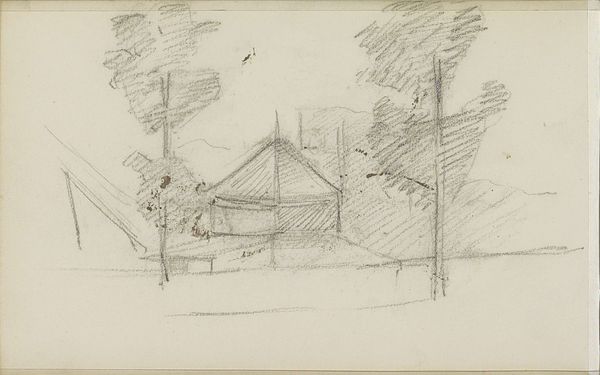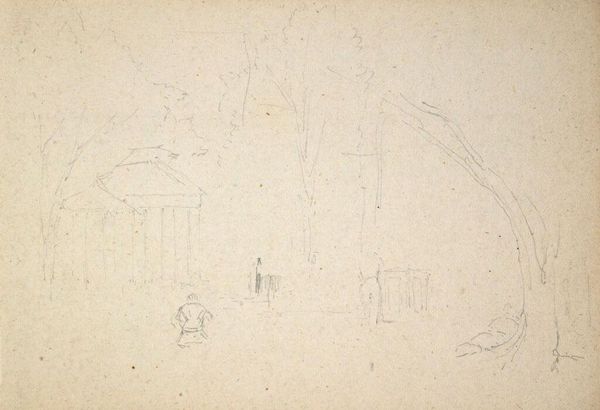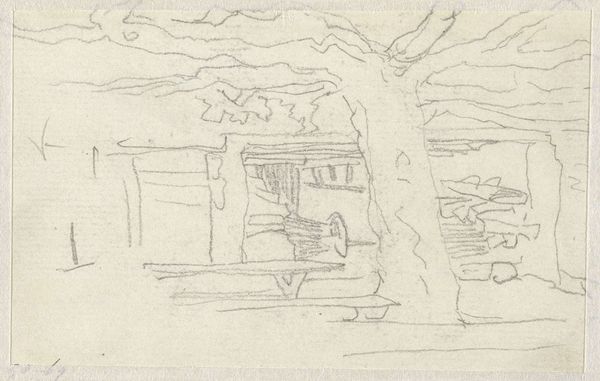
Copyright: Rijks Museum: Open Domain
Editor: So, this is Jozef Israëls' "Watermolen bij een stenen brug," created around 1902. It’s a pencil and pen sketch. It feels so delicate and ephemeral, like a fleeting moment captured. What do you see in this piece? Curator: What immediately strikes me is the raw, unadorned depiction of labor and its physical context. We see the mill, a machine for production, rendered in simple lines. Consider the materiality of the drawing itself – pencil on paper. A readily available, almost democratic medium, in stark contrast to the heavy industry it represents. Do you see how the sketchiness avoids romanticizing the scene? Editor: I do. It's not idealized at all. More like… functional? Curator: Precisely! The visible marks of the artist’s hand emphasize the labor involved not just in the mill’s operation, but in the creation of the artwork itself. This collapses the traditional hierarchy between art and craft, between the high-art sketch and the 'lower' function of a working mill. It begs the question: what are the social and economic forces that shaped this landscape and the artist's choice to depict it this way? Editor: That makes me think about who would have viewed this image at the time. Was it meant for public consumption, or was it a preparatory study of sorts? Curator: An excellent point. The materiality hints at function, doesn’t it? The artist chooses simple means to reveal what’s truly relevant: labor and industry and its presence, demanding our respect. Editor: This really opens my eyes to seeing beyond just the image, considering all the materials and means that went into it. Thank you! Curator: My pleasure! Thinking about materiality allows us to question the entire system of artistic production. It reframes how we engage with the art itself.
Comments
No comments
Be the first to comment and join the conversation on the ultimate creative platform.
